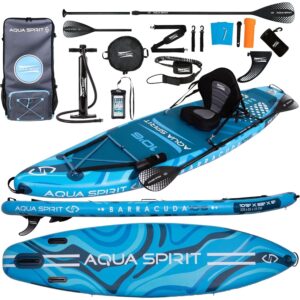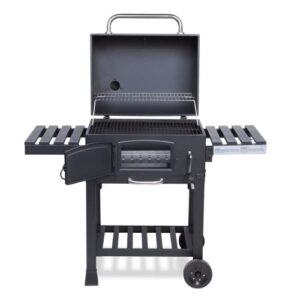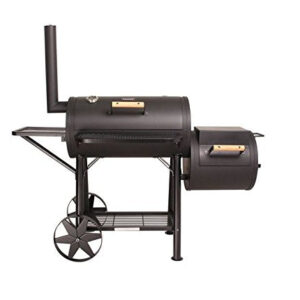Overview
Restore your lawn’s health with the WEN DT1315 2-in-1 Electric Dethatcher and Scarifier. The 13 A motor spins up to 3,300 RPM, clearing a 15″ (38 cm) path of thatch, moss, and debris and collecting it in a detachable 12 gal (45 L) bag.
Key Features
- 2-in-1 Functionality: Swap between the 16-blade scarifier head and 24-tine dethatcher head in seconds.
- 5-Position Depth Control: Adjust from +¼″ to –½″ (+6 mm to –13 mm) for aeration or deep thatch removal.
- 15″ (38 cm) Working Width: Covers more ground per pass for faster results.
- Overload Protection: Automatically shuts off on contact with hard obstacles to safeguard the motor and tines.
- Easy Cleanup: Detachable 12 gal (45 L) mesh collection bag for quick disposal of debris.
Technical Specifications
- Motor: 13 Amp corded electric
- Working Width: 15″ (38 cm)
- Scarifier Blades: 16 steel blades
- Dethatcher Tines: 24 steel tines
- Depth Settings: +¼″, –⅛″, –¼″, –⅜″, –½″ (6 mm, –3 mm, –6 mm, –10 mm, –13 mm)
- Collection Bag: 12 gal (45 L) detachable
- RPM: Up to 3,300 RPM
- Weight: 16 oz (0.45 kg)
- Dimensions: 40″ D × 15″ W × 25″ H (102 × 38 × 64 cm)
- Warranty: 2-year limited
What’s in the Box
- WEN DT1315 electric dethatcher/scarifier
- 16-blade scarifier head
- 24-tine dethatcher head
- 12 gal (45 L) collection bag
- Operator’s manual




















































I’ve used it to clear weed-covered areas in the backyard and replant with grass. It even chewed through 20 square feet of thick ivy the previous owner left behind—no problem. The dethatcher works great too.
The only downside is the assembly: the orange plastic knobs are oddly designed and now stick out awkwardly. That said, the blades are super easy to swap out.
I choose the corded model instead of the cordless for a couple reasons.
1. I knew this was something I would probably only use once or twice a year
2. After reading reviews about the battery powered model using both batteries at the same time, and the batteries not necessarily lasting long, I decided I didn't want to wait for batteries to charge once I got started
I put the machine together in about 20 minutes. Very simple, and very minimal assembly required.
I put the thatch blade on, and got started.
My lawn was many years in need of thatching. The dead built-up head was very thick, and as you can see in the pictures, even after buring my lawn with a propane torch, there was still a lot of dead grass that need to be removed. The Wen thatcher did a great job. I'll probably go over it with the (included) scarifying blade, them I'll seed.
Overall, I'm pretty impressed with how well this machine got rid of all the weeds, and rips apart the Bermuda grass root system.
Afterwards, I spread Weed and Feed, waited 2 days and watered. Not much re-geowth has occurred, but that's actually what I wanted. No dandelions have popped up either. That's a miracle for my yard.
It's given me a fresh canvas to begin a new lawn
We have a medium sized lot, I was able to do the front, back, and side yards in two sessions for a total of about 1.75 hours of time. I emptied the bag about five to six times, although some people like to leave the bag off and just rake the clippings or ensure they are mulched and let nature do it's thing. Highly recommend if you're looking to save money on aeration services from a company, this machine is fairly minimal work with good results. And you get to keep the machine!! I love my fancy high powered rake :p
I'm looking forward to a much improved lawn this year and this machine will be the reason.
This Wen thatcher set me back $135, each rental of the commercial thatcher runs me $55 not including the gas to run it.
The results were identical! Both work very well. The commercial thatcher does not include a debris catcher, the Wen has one that sucks! Either way, you are going to be raking!
The commercial thatcher is a bit easier to use because of its weight. It hold to the grass better. But that comes at a huge disadvantage, the weight makes it very hard to unload and load from car! For this reason, I am going to call this topic a draw. Having to manipulate the electric cord was a nuisance, but was not unmanageable.
The time taken to thatch my modest sized lawn was a bit more for the Wen, but that does not include hour each way to go to the rental facility and pickup/deliver the thatcher. This is a huge win for the Wen!
So, the ultimate win/lose will be how long it lasts. Clearly the thousand dollar commercial unit is designed to last for a decade or more of commercial use. It is a better unit in every way, but the Wen is so cheap that all it has to do is get three uses to make it win the comparison. Will it last that long? I am betting yes. But even using it only once a year, I would be shocked if it lasted 10 years. It is not well made, it is going to die. But until it does, I am very happy with it!
I live in the Pacific Northwest where the soil tends to be acidic and with that, we have a lot of moss to contend with if we decide to remove it from our lawns. I made this purchase to remove the moss but was pleased to see how much thatch came up with the moss, too.
When I unpacked the box, I was taken aback by how presumably cheap everything looked. The wheels appeared they would fall off the first time I used the de-thatcher, and I was sure the batteries were so inefficient I would need to purchase a bank of them, so I was not waiting around wasting time for the ones that came with this model to re-charge.
So down to specifics: I have a home that sits in over an acre and a half property. Take away the footprint of the house, the driveway, two small outbuildings, you can guess there’s still a lot of lawn left. But I didn’t want to break the bank with purchasing a more expensive model, so I thought I would give the Wen a try.
I am not offering recommendations (other than the stars I believe the product deserves), only observations from its use on my property and my particular situation.
First, I mowed the lawn to 3” picking up as much as I could prior to de-thatching. I sat the unit on position 2. I found that I could de-thatch an area of about 70 feet x 140 feet then the batteries would need to be re-charged. Although the manual says to avoid low discharge cycles by re-charging frequently, I didn’t want to make a career out of de-thatching my lawn. I’m not sure of the wisdom of this but I wanted this done as soon as possible. The batteries being new, it takes about an hour to fully re-charge which gave me time to rake of the thatch and haul it away to the burn pile. And there was plenty to haul away. I then sat the lawn mover to 2” (basically scalping the lawn) then re-thatched the lawn going at it at a 90-degree angle from previous, this picked up more thatch, which I once again raked up and hauled away. Even with two de-thatching’s I didn’t remove all the moss but it did remove most of the thatch. I will still need to broadcast moss killer on the lawn, but I believe with most of the thatch and moss removed, the moss killer with have greater affect, as well as fertilizer applications.
You might be wondering why I said I raked up the loosened moss and thatch vice using the bag which came with the unit. Simply stated, I found the bag too small for my needs with the amount of loosened material I was picking up. Having to stop, remove the bag and empty it was a pain. At first, I took off the bag and tried to run it that way; I found that the loosened material had nowhere to go, and it was hard to get the de-thatcher over the buildup of clumps. Next, I removed the bag from the frame to have the cover remain open to allow the thatch and moss to be discharged – I quickly learned that unless you want to be covered with a coating of thatch, that wasn’t such a good idea. I then cut a piece of carpet large enough to lay on top of the frame and hang down on the back which seems to work. (see pic).
I can’t speak of how well the scarifier works as I don’t have a need to use that yet. Nor can I speak of how long the batteries will last until I need to purchase new ones. I can only speak of how well it works for me; hope it works for you, as well.
There are two pictures I submitted with this review. One is of the carpet flap I made vice using the bag. The other is of the pile of thatch removed from the lawn. Vice the few sticks you see in the pile I would estimate that it’s 75% moss, the remaining a combination of thatch, lawn clippings and pine needles.
Now for the de-thatching. I used the scarifier blade for my front yard because it hasn't been detached in years. This machine pulled up piles of thatch while also digging a bit into the soil, which later allowed me to more efficiently seed and fertilize. I filled five large contractor bags with thatch. When I cut the grass with the grass catcher on, I barely fill half a contractor bag. As other reviewers mentioned, the catching bag is much too small; it tends to quickly fill up. I pretty much ignored the catcher and let the thatch overflow, then I followed up with a rake. I still had to stop and empty the catcher, but that really wasn't a big deal. If I had rented a de-thatcher, I would have had to rake anyway and go through the hassle of picking it up, using it and returning it. For the price, I figure I only need to use this machine three times and I will have saved money. I switched to the de-thatching attachment for my back yard. It did a decent job without digging down into the soil. I'll probably use the scarifier the next time to pull up more thatch. Another nice thing is NO EXHAUST FUMES!!!! Yes, handling the extension cord was a bit of a hassle, but once you figure out how to swing it out of the way, it's not a big deal. Just be careful you don't run over the extension cord. Aside from destroying the (expensive) cord, you may get a dangerous and bad electric shock.
It's a good machine and did a much better job than the gasoline powered de-thatchers I have rented in the past. It is well worth the investment. It's relatively light weight, folds up and can be stored on a shelf, under a table or some other dry place that is out of the way.